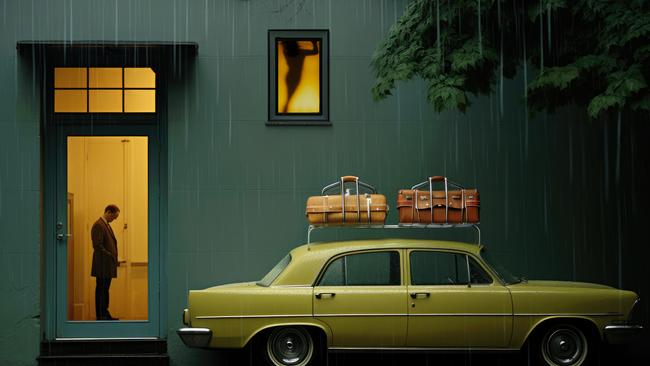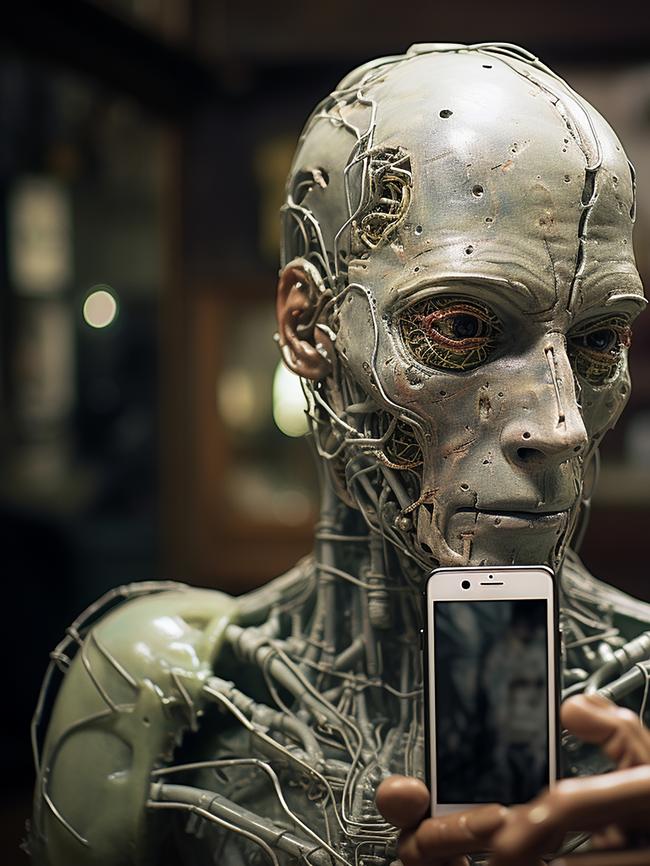
For students and many members of the general public, it may be especially useful as a more sophisticated search engine: so instead of looking up Wikipedia to find out about, say, the Mexican Revolution, one could ask AI to write a 300-word summary of the events and individuals of the period, or ask it a series of specific questions about the Revolution’s causes, underlying social conflicts, and eventual outcomes.

Here, though, there is an important caveat as well as a grave risk. The caveat is that in order to be capable of making good use of this technology, individuals need to be intelligent, educated, and already possess considerable knowledge and understanding.
The same is already true of the web in general: for thoughtful and critical people it is a treasure house of information; for others it is a swamp in which they can easily drown, or lose themselves, as we have seen, in disinformation and conspiracy theories.
Beyond this caveat, there is a greater danger: for we become intelligent and knowledgeable (and perhaps eventually even wise) by making the effort to read, research, assimilate, digest, summarise, assess and prioritise information, and by learning to express our conclusions in clear writing. The very clear risk is that people – starting with schoolchildren – will no longer make that effort, but use AI as a shortcut to obtain the information they need. But you don’t become intelligent by being given information, as we see already with pupils copying Wikipedia for an assignment.
So the danger is that as AI becomes smarter, humans could become more stupid; and as always this has a class dimension, because good schools and universities will continue to teach the fundamental skills that foster the growth of intelligence. They will also employ teachers who are intelligent and educated.
Poorer schools and universities will probably decline even further, especially if AI simultaneously replaces many of the jobs that formerly supported the families of their students.

The consequences of AI for art, literature, cinema, etc are enormous, as already pointed out by Geordie Williamson (Review, Saturday September 9). Actors and screenwriters in Hollywood have recently been on strike against the threats they face to their livelihoods. We have already seen cases of AI being used to generate pop songs in the style of famous singers.
As for writing, it is easy for AI to generate highly formulaic texts like real estate agents’ blurbs, soft core pornography, academic papers by education experts, catalogue essays about contemporary art, etc. In fact, the authors of such texts have already behaved like AI algorithms for so long, producing largely meaningless discourse without any critical self-awareness, that they have made it exceptionally easy for AI to emulate them.
Even with most popular fiction authors of the embossed-paperback cover variety, both the plots and the writing are so formulaic that they could easily be replaced, and it would not represent much of a loss to the human spirit if they were.
Only this leaves us with the uncomfortable outcome that the literature that mass readers would “consume” would be machine-generated. But again that is possible partly because this writing was mechanical and predictable in the first place.
But serious literature could also be imitated by AI, and to go straight to the most painful prospects, we have to admit that AI is probably already capable of generating a page of “Proust”, a fake “Donne” sonnet or an extra dozen lines of “Eliot” for the Waste Land. These would, of course, be pastiches, just as even now forgeries in art are pastiches in which we typically see common themes and motifs from authentic works reconfigured in the fake (which becomes a prime clue to inauthenticity).
Pastiches can be entertaining and even illuminating by drawing our attention to certain patterns of style or recurrent tropes in the original – like those Proust did of Saint-Simon, Balzac, Flaubert and others (composed from 1908 and published in Pastiches et mélanges in 1919) but AI pastiches are unlikely to be more than a pastiche, because by definition they are derivative of a finite corpus of published texts.
Having just re-read Proust’s dazzling pastiche of the Duc de Saint-Simon’s Memoirs, I realise, in fact, that this text could not have been generated by AI, because it is not just a mash-up of Saint-Simon’s prose, but a parody which affectionately caricatures the original, the ironic tribute of one great author to another who he especially admires.
Are there legitimate applications of AI in art and literature? The fundamental principle is that AI can only generate what it is asked to produce. So even for popular sub-literary fiction the quality of the product will depend on the sophistication of the instructions given by the “author”.

Perhaps the most positive way to think of this is as analogous to the relation between a director and a screenwriter in cinema. The director may have an idea for a film, even a very detailed one, including the main characters and events and locations and scenes that will be turning-points or conclusions.
All this may be written up as a “treatment” before it is given to a screenwriter to compose the dialogue between the characters.
So the “author” may play this directorial role and the AI would generate the actual text of the novel based on these detailed instructions. That seems possible, and perhaps the AI would do as good a job as the hacks who write most of the predictable screenplays in commercial Hollywood movies today. But we would not get the distinctive, idiosyncratic and memorable lines of, for example, the Humphrey Bogart film The Big Sleep (1946), directed by Howard Hawks, based on a novel by Raymond Chandler and with a screenplay by William Faulkner.
In the world of the visual arts, AI has already encroached on the domain of photography. The German photographer Boris Eldagsen won the creative open category of the Sony World Photography Awards earlier in 2023 before handing the prize back and revealing that his photograph was in fact AI-generated.
He believes that we should maintain a clear distinction between photography and the AI version he calls “promptography”, and he has been invited to judge the inaugural International AI Prize at the Ballarat International Foto Biennale, reviewed here two weeks ago.
To quote my colleague Bridget Cormack:
Eldagsen said that while many users of AI were happy to copy images from media and movies to create an image, the judges would be looking for finalists who had used their imagination and could show a sophisticated workflow in the instructions they gave the technology.
In such cases, the new technology is simply a new tool; it can manipulate data but it cannot give the impulse, the purpose or the end of the work. That remains human as it does in, for example, Daniel Crooks’s digitally manipulated video works.
Nonetheless, this case also alerts us to the enormously increased risk of fakes of all kinds in an online world already rife with misinformation and manipulation. Particularly in art, Eldagsen is right to insist on clear ethical guidelines and distinctions, and the case of AI photography also raises the increasingly disturbing and deceptive practices in the production of what are presented as paintings.
The use of technology is not unethical in itself, and artists have for centuries used whatever tools were at their disposal. But in the age of digital photography, and of technologies that can misleadingly transform photographs into simulacra of paintings, galleries and art prizes must insist on full disclosure of the process by which images have been produced.
The works that have been selected for the inaugural AI category of the Ballarat Foto Biennale represent a range of what can be done with the new technology, from the whimsical to the more serious.
The most striking of them, like Ashadi Hopper’s A Study in Absence, emulate the look of a photograph while fairly clearly remaining wholly artificial. Nic Kocher’s Leaving Shadows Behind is also a memorable image, recalling a cinema still, but again combining hyper-real motifs with a general sense of unreality. Adrian Elton’s Meta Inversion #01 is something of a virtuoso performance, although also a kind of sophisticated joke in which he appropriates another AI work and imagines its author as a Renaissance artist sitting at his easel.
Most of the other images are more or less interesting, depending on how effectively they have used their AI tools to produce something that has some coherent analogous relation to human experience, while still being disconcertingly different – as we see in various ways in the images by Derek Kreckler, Carolyn Mackay or Stacy Elson. A few works are either superficial or limited in their conceptual basis or imaginative realisation.
We can readily admit that there is a place for this new category of “promptography” or whatever it will be called, although there is little prospect of it seriously rivalling photography, because of the fundamental materiality that still – even in the digital age – seems to ground the best photographic images.
This is why some of the most important contemporary photographers, like Jeff Wall, Gregory Crewdson or Thomas Demand, go to extraordinary lengths to prepare and set up the world they are going to photograph, even if digital processing is used in post-production.
Perhaps the deepest conclusion of all this is to remind us of the difference between AI as a machine for processing information, and human consciousness as the seat of awareness, feeling and understanding. It is consciousness that impels us to create art, or to think, wonder, want to know. It is also consciousness that contemplates the meanings evoked by art and literature and music.
If we think of the radical distinction of the Indian Samkhya tradition, consciousness lies beyond mind itself, which is its tool and instrument, but whose disturbances can also impede awareness. Hence the purpose of yoga, to still the movements of the mind: Yogas-citta-vritti-nirodhah.
And while AI can emulate many of the operations of mind, it does not replace consciousness, precisely because that is not a function of mind, reason, or data processing.
Prompted Peculiar
Ballarat International Foto Biennale, until October 22
Prompted Peculiar
Ballarat International Foto Biennale, until October 22




There is no doubt that AI is going to turn many things upside-down, from employment in certain sectors to concepts of privacy, not to mention copyright and even authenticity in art and literature. Its most beneficial applications may be in medicine (processing X-rays, scans, blood tests, genetic data, etc) or in engineering (monitoring the safety of a plane’s systems, or the soundness of a bridge, etc). At the same time, it will cut through millions of jobs like a combine harvester, eliminating the need for humans to do data entry and processing, or to produce straightforward reports based on those data, including tax returns, conveyancing and financial advice. It will even write code for digital applications.